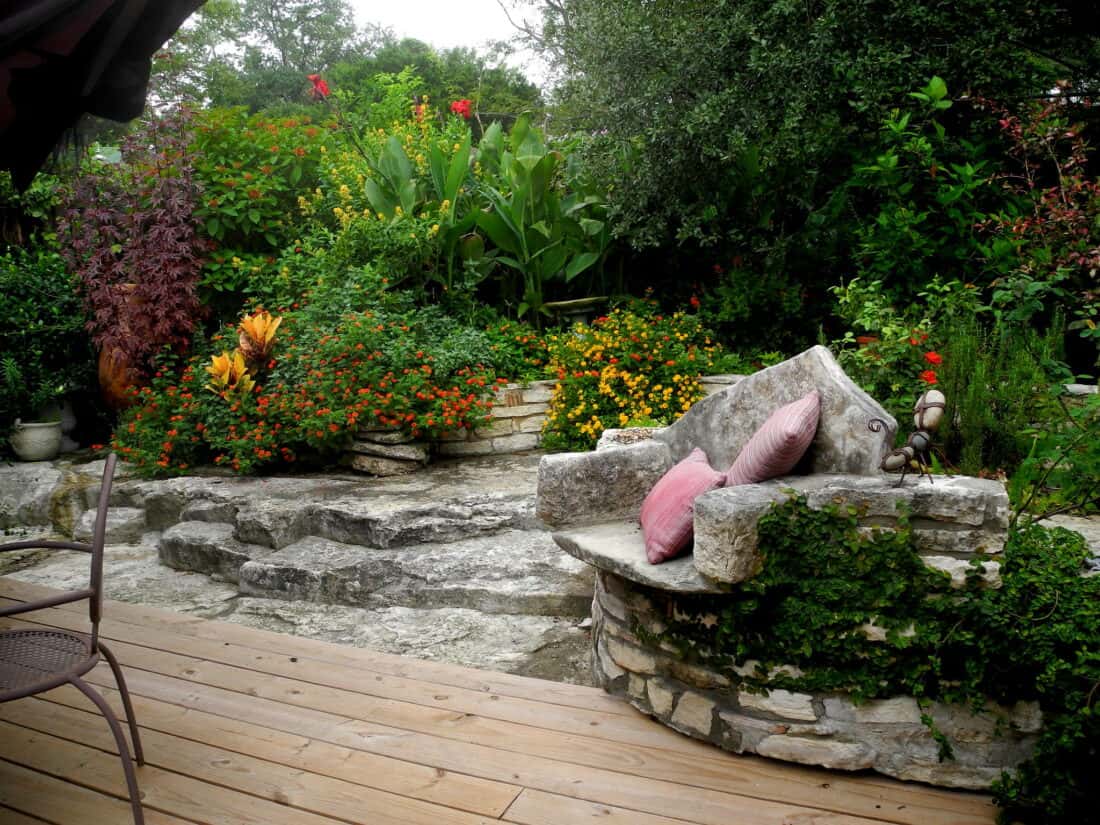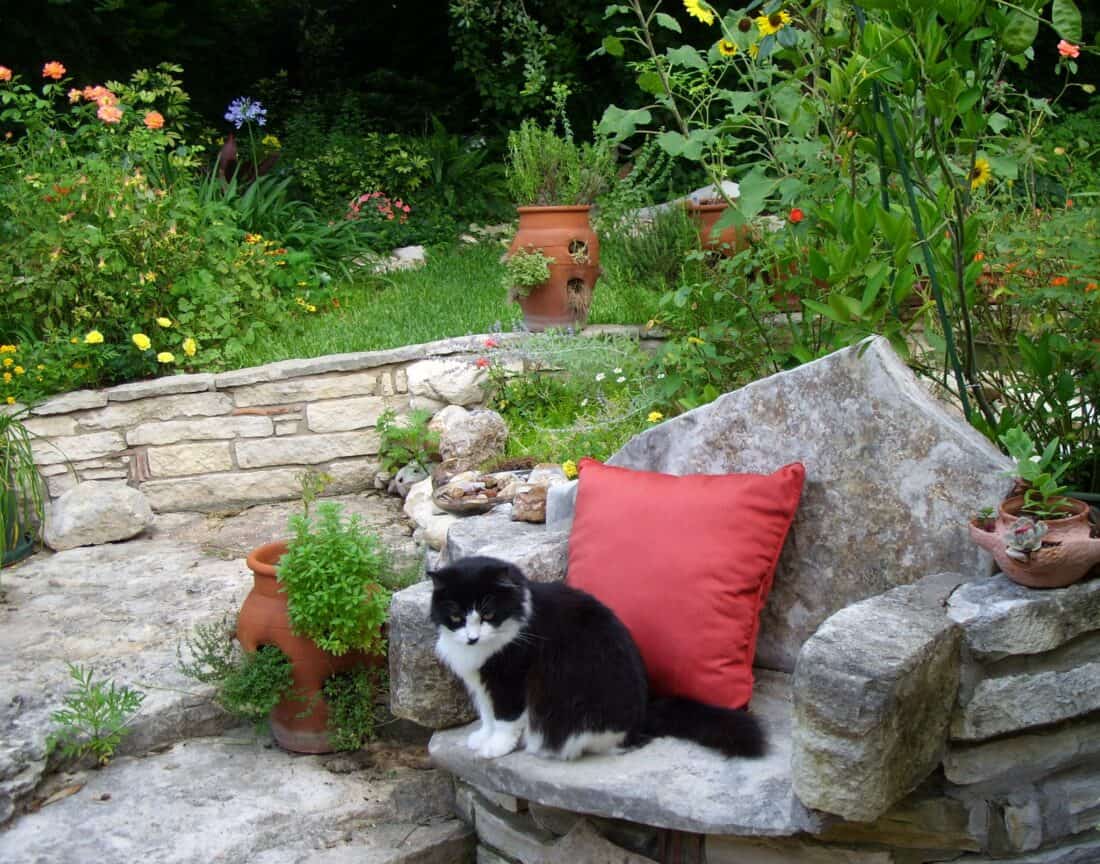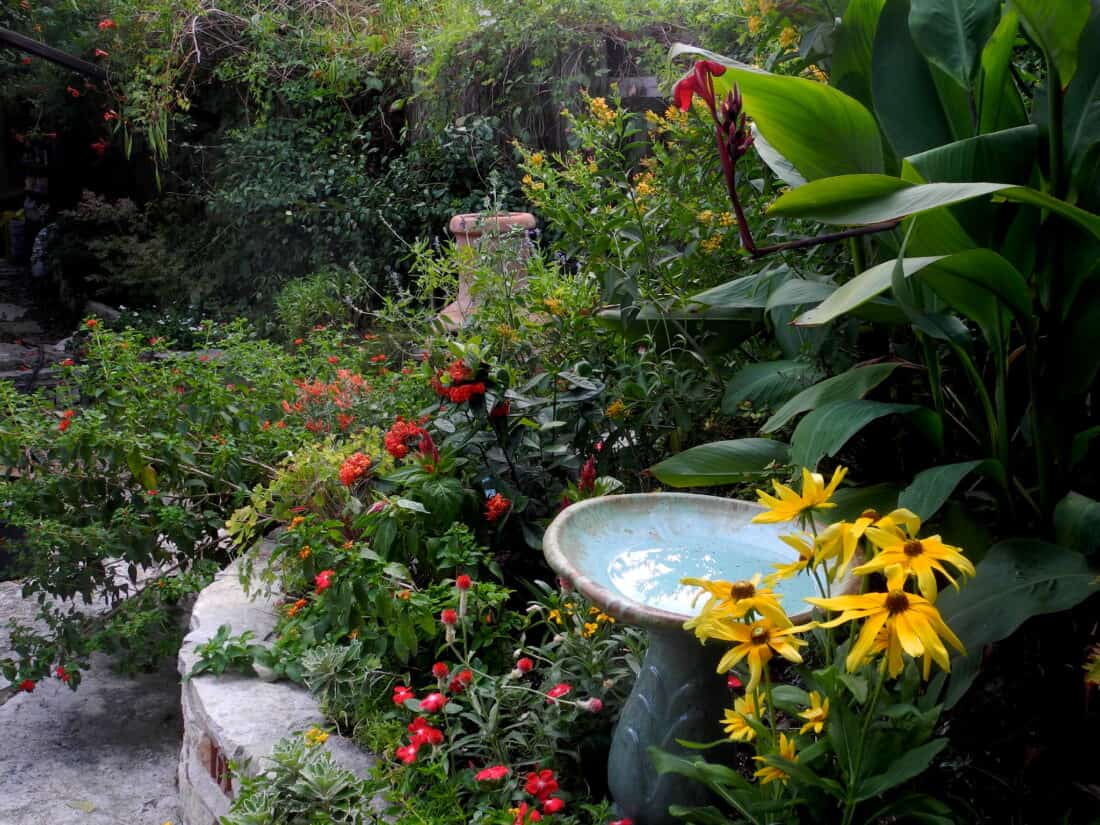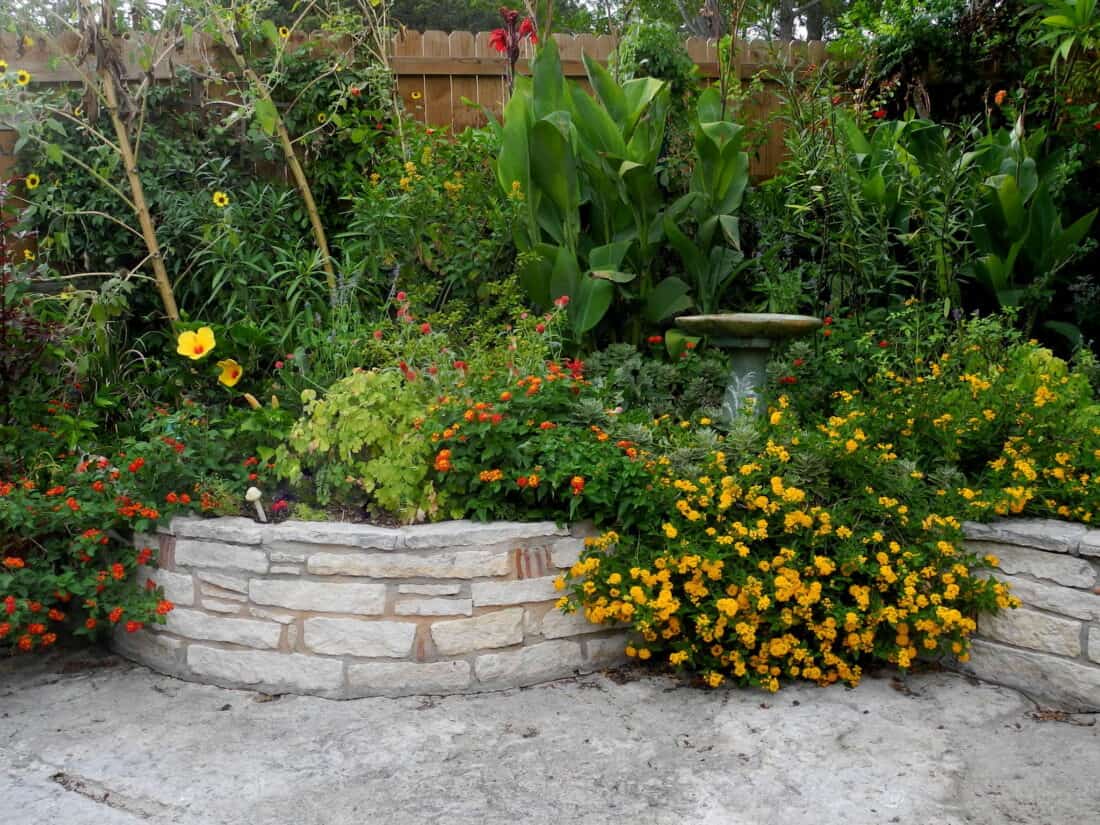Limestone and limestone blocks play a significant role in the landscape of the Texas Hill Country and gardens in Austin, Texas. The region is known for its unique geology, characterized by extensive limestone formations.
In Patricia’s Austin garden, she had no choice but to feature the regional limestone. A huge piece of Limestone ledge is right in the middle of the backyard. Take a look at the picture below – that big stone wasn’t going anywhere.
This garden’s lush planting is beautiful, but the real star of this garden is the hardscaping. The deck levels off an area immediately adjacent to the house and blends to the natural surface of the large piece of the ledge.
Limestone can be fairly easy to work with, so I am curious to know if the “steps” were there or if they were augmented with a little hand carving.
Set atop the ledge base; planting areas were created by building small retaining walls and beds with limestone blocks that match the existing stone.

The edges are always the trickiest part of a garden’s design. How does one thing blend with another thing? Here, the deck butts up to the stone, and the stone walls (in places) sit with the deck. It isn’t too perfect, and I think that its success is in the acceptance of a less and perfectly level surface and a good enough blend between the two surfaces.
Turning a Problem into a Feature
When we plan gardens out on paper, we have a natural tendency to line things up; we make perfect right-angled corners, and generally, we get very organized about layout. But sometimes, that isn’t the best way to move forward. This garden’s challenge was to work with the large organic-shaped stone and build around and on it. It is a reminder that sometimes you just have to go with the flow and let the landscape lead you to the best design.




Using Limestone in the Garden
1. Natural Aesthetic: Limestone is a prevalent natural material in the Texas Hill Country (and other parts of the world). Its warm, earthy tones will blend seamlessly with the local landscape where it originates.(Please – don’t bring limestone to New England – it’s not a thing around here!) Many garden designers and landscapers choose to incorporate limestone in hardscaping elements like pathways, retaining walls, and borders to create a cohesive and harmonious look.
2. Durability: Limestone is a durable and weather-resistant material, making it well-suited for the challenging climates where it is often found. It can withstand hot and dry summers and occasional heavy rainfall.
3. Retaining Walls: Limestone blocks are often used to build retaining walls. These walls serve practical purposes like erosion control and add a distinctive character to the garden. The natural texture of limestone complements the indigenous flora. Look closely at limestone when working with it. In many places, limestone can contain fossils and remnants of the past that add even more character and beauty to the garden.
4. Water Features: Limestone is ideal for creating water features such as fountains and cascading waterfalls. Its porous nature can help filter and purify water, making it a sustainable choice for garden designs with water elements.
5. Native Planting: Gardeners in limestone-rich regions often incorporate native plants that thrive in the limestone-rich soil. These plants have adapted to the unique conditions of the area, including the alkaline nature of limestone, and they contribute to the region’s distinctive landscape.
6. Mix and Match: If you look closely at these limestone block walls, you can see that terracotta has also been used to add detail to the design. Terracotta is also indigenous to this region, and when you are considering materials, you can always mix and match them with native materials and feel confident that they will work together.
images by pawightm
+comments+